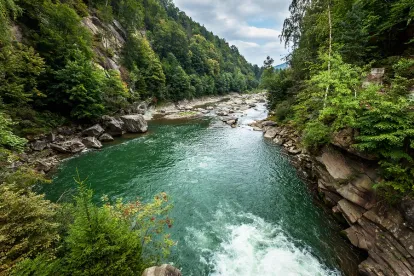Fulfilling one of President Trump’s campaign promises, on December 11, 2018, the U.S. Environmental Protection Agency (EPA) and the U.S. Department of the Army (the Corps) signed a proposed rule to limit the scope of the regulatory definition of “waters of the United States” under the Clean Water Act (the Act). That proposed definition differs meaningfully from the definition issued by the agency in 2015, which is currently subject to litigation. If finalized as proposed, the revised definition will benefit homebuilders, land developers, and farmers by providing greater certainty as to which projects are subject to Corps jurisdiction and require permits.
The Act generally prohibits the discharge of pollutants into navigable waters (i.e., waters of the U.S.), except in accordance with a permit issued by the EPA, the Corps or a delegated state under Sections 402 or 404 of the Act. These permits apply to a wide range of business operations, including discharges of dredge or fill materials associated with land development, such as the placement of structures like footings or onsite soils derived from grading activities into waters of the U.S.
The proposed definition is the latest attempt in a multi-decade long saga to bring clarity to jurisdictional issues commonly disputed among the agencies and regulated community, including questions over whether discharges to wetlands, ditches, and tributaries require permits. Prior definitions have been heavily influenced by numerous court decisions, the most recent of which, Rapanos v. United States, 547 U.S. 715 (2006), involved a 4-1-4 split that left many uncertain about the appropriate definition, and resulted in a “case-by-case” analysis for many potentially federal jurisdictional waters that was cumbersome for regulators and the regulated community alike. In 2015, the Obama administration issued a regulatory package, formally titled the “Clean Water Rule” but commonly known as the “Waters of the United States” (WOTUS) rule, that opponents viewed as expanding federal jurisdiction over wetlands beyond that intended by Congress.
Under the proposal, traditional navigable waters, as well as certain tributaries, ditches, lakes and ponds, impoundments and wetlands adjacent to other jurisdictional waters will continue to be subject to federal jurisdiction and permitting requirements. However, a number of “jurisdictional waters” that had been regulated by the Corps in recent years will lose that status. The proposed rule does the following:
- Eliminates interstate waters as a standalone category of waters of the United States. Wetlands that cross state lines but do not have a connection to traditional navigable waters are no longer regulated.
- Specifies characteristics of jurisdictional tributaries, ditches, and wetlands. The agencies are abandoning the Corps’ case-by-case use of Justice Kennedy’s “significant nexus” analysis from Rapanos in favor of clearly defined categories: only tributaries, ditches or wetlands meeting the express definition are jurisdictional.
- To be jurisdictional, a tributary must contribute perennial (continuous year-round) or intermittent (continuously during certain times of a typical year) flow to a traditional navigable water, either directly or indirectly through other jurisdictional waters. Significantly, tributaries do not include surface water features that flow only in direct response to a rain or snow event.
- Ditches, i.e., artificial channels used to convey water, are jurisdictional if they have been used, or are suitable for future use, in interstate commerce, as are certain ditches constructed within jurisdictional tributaries or wetlands. All other ditches are excluded.
- Wetlands are considered jurisdictional only if they abut a jurisdictional water or have a direct hydrologic surface connection with a jurisdictional water in a typical year (such as a wetland that is flooded by a perennial or intermittent stream in a typical year).
- Wetlands are no longer jurisdictional if physically separated from a jurisdictional water by upland or by dikes, barriers, or similar structures and lack a direct hydrologic surface connection to such waters.
The proposed rule highlights specific issues on which the agencies are seeking comments, which will be due within 60 days after the rule is published in the Federal Register. The administration’s express intention is to provide more certainty as to what constitutes waters of the U.S. Whether this proposal will ultimately achieve the administration’s goal is uncertain. How, for example, should a landowner determine whether a tributary flows continuously during a “typical year?” At this time, the only certainty is that the scope of the definition will continue to be controversial, given that the language of the proposed rule also appears to narrow the scope of waters subject to permitting requirements. The rulemaking docket will likely be flooded with comments from environmental groups, as they begin to prepare for the expected legal challenges to this narrower definition of waters of the U.S. In the interim, the Obama administration’s broader 2015 WOTUS rule definition applies in 22 states, while the pre-WOTUS “significant nexus” test applies in 28 other states where application of the WOTUS rule and definition have been stayed by federal court injunctions.
The prepublication draft of the proposed rule may be found on the EPA’s website here. EPA published notice of a public meeting to be held on January 23, 2019, here. A complete set of documents related to the rulemaking will be available upon publication of the proposal in the Federal Register through the Federal eRulemaking Portal.





 />i
/>i

